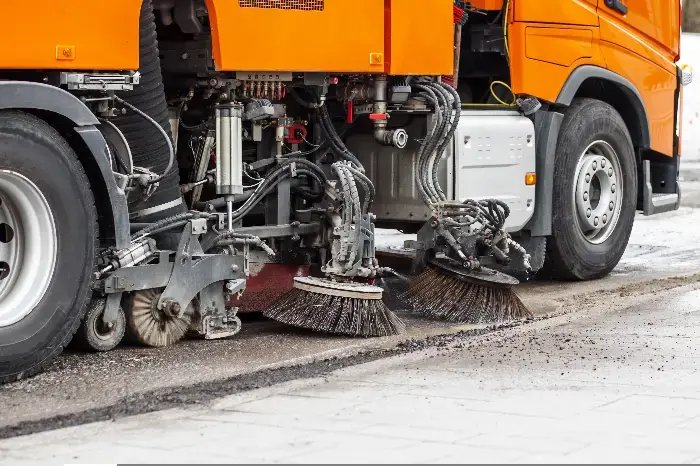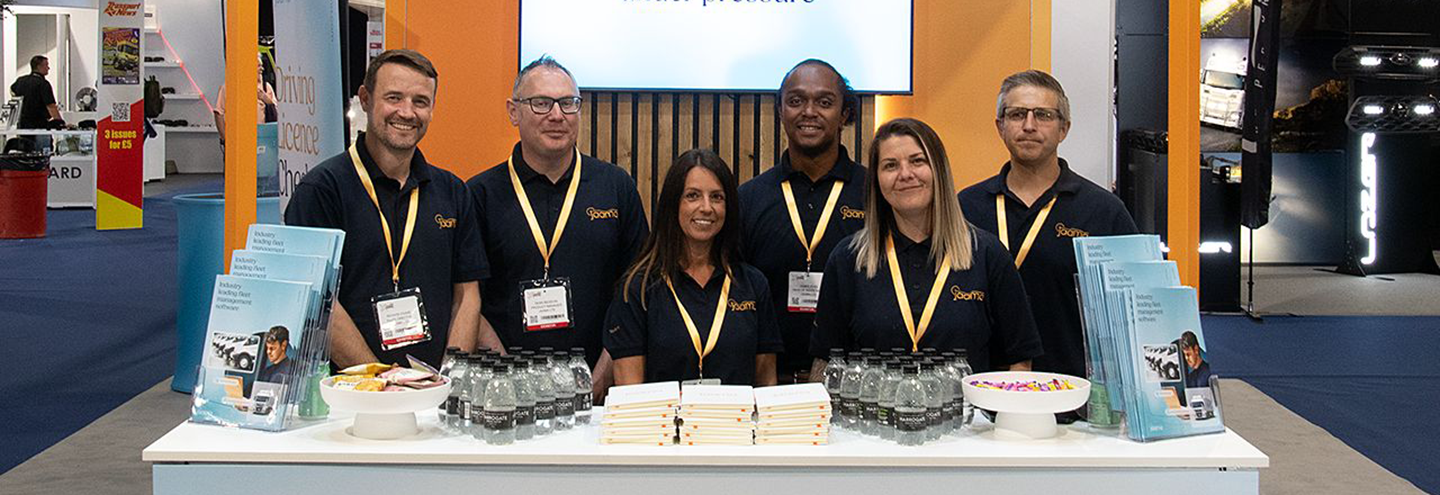We usually dismiss compliance as just paperwork. In reality, it’s a massive risk across the board — operationally, for your reputation, and your bottom line. In the UK, regulators can stop your vehicles, issue costly fines, and prohibit driving if your records and checks aren’t up to scratch.
Treat compliance as a formality, and it’ll eventually turn into a crisis.
Gareth Jones, Group Fleet Transport Compliance Manager at Speedy Hire, oversees over 1,700 vehicles across cars, vans, and HGVs. With some of the best accreditations in their back pocket, such as FORS Gold and DVSA Earned Recognition, Gareth has one clear message: compliance is a leadership issue and a performance lever, not a back-office chore.
The real fleet compliance risks nobody talks about
A lot of operators frame compliance risk quite narrowly, focusing more on missed inspections, lapsed training, or expired MOTs. However, some of the biggest compliance threats actually come from outside of the depot, not inside.
Specifically, there’s a big rise in unregulated agents and dealers who can release or service vehicles without facing the same scrutiny as fleet operators do.
“The biggest risk right now is agents and dealers. They’re not managed or audited like operators, but you carry the liability if something’s missed.”
This disconnect can create some serious blind spots, as vehicles may be booked for overnight servicing, only to come back untouched, which leaves operators exposed.
“You can collect a vehicle in the morning and find nothing was done overnight. If it’s defective on the road, it’s still on you.”
It’s a clear lesson. Outsourcing doesn’t outsource responsibility. Without strong, clear audit trails and proactive checks, fleets like yours inherit huge risks that suppliers can’t control, but regulators will still hold you responsible.
From reactive to strategic: The “skill vs will” model
It’s easy to see every compliance oversight as an individual failure, such as a careless driver or an inattentive manager. However, Gareth challenges this view, stating that non-compliance should be reframed as a leadership and training issue before it turns into a disciplinary problem.
“There are only two reasons someone wouldn’t do something: skill or will. Train for skill; manage and hold to account for will.”
In a real-life situation, this means asking drivers whether they genuinely know what’s required of them before assuming they were deliberately neglectful. Gareth highlighted that training closes any skill gaps, while management processes address issues fairly and consistently.
In fact, enforcing and leading with fear is actually counterproductive.
“Don’t manage through fear. Support, guide, and explain the why — then audit for understanding.”
By adopting a more supportive approach, you naturally create a stronger compliance culture. You build one that’s built on coaching, explanation, and accountability, rather than blame. This way, you can turn compliance from a reactive fire drill into a strategic, proactive discipline.
Moving beyond box-ticking fleet compliance policies
Most fleets have written compliance policies that cover things like safe driving standards, defect reporting, walkaround checks, and more. However, these policies don’t mean much unless they’re embedded into your daily processes.
Gareth mentions that this principle underpins how Speedy Hire manages its vehicle checks.
“We built our walkaround process so drivers can’t progress jobs until mandatory items are cleared. Managers must disposition non-critical defects.”
This means it’s compliance by design, not just by signature. The way Speedy Hire works, drivers are actually physically prevented from bypassing any checks, and managers have to engage with defect reports to close the loop between policy and practice.
Something else to take inspiration from is technology. Speedy Hire uses technology to shift compliance from paper to practice, where in-cab tools give the drivers immediate feedback so the business can catch unsafe behaviours before they escalate.
“In-cab nudges help drivers self-correct — seatbelts, phones, harsh events — and managers only get alerted when there’s a pattern.”
By adopting a similar approach to Speedy Hire, you can address behaviours in real time, rather than waiting for reports at the end of the week. This prevents small oversights from snowballing into bigger accidents or enforcement action.
But, most importantly, it reinforces that compliance is part of driving and not a separate admin-focused exercise.
Compliance as a performance driver
If you frame compliance as a regulatory focus, you risk it being undervalued and also underfunded. However, if you do it right, compliance can actually save you money in the long run, improve safety, and boost your fleet and drivers’ performances.
There should be optimism around new training methods to help, rather than relying on traditional classroom sessions where people lose focus and struggle with the cost. There should be more excitement around immersive approaches to change the equation, such as virtual reality.
“I’m a big fan of VR for high-risk scenarios. It’s immersive, reduces cost, and avoids taking vehicles off the road.”
If you deploy VR like Speedy Hire for urban driving and crane operation training, you’ll also see the massive benefits: minimised risk, reduced downtime, and creating more memorable learning experiences.
However, training is just one area where compliance fuels performance. The other piece of the puzzle is benchmarking data, which helps you compare regions and depots, identify weak points, and invest resources into areas where they matter most.
The outcome? Fewer infringements, safer drivers, lower costs, and a stronger competitive advantage.
“Benchmarking and live data change the conversation. You move from anecdotes to action.”
The reality of integration: From many systems to one view
In the past, most fleets relied on spreadsheets, which brought their own set of challenges. However, many have adapted to the times but are now facing the opposite problem of relying on too many systems.
You see fleets having one system for licence checks, another for telematics, a third for HR systems, and an extra for fuel portals — and this keeps adding up. Yes, they all hold valuable data in each system, but when this data is isolated, they create silos and even more headaches.
“Most fleets already have systems. The problem is integration. Don’t make end users pay the earth just to connect their own data.”
When you have countless disconnected tools, you still have a lot of manual work to do when reconciling reports. And you still face the same struggles with wasted time and an increased risk of mistakes. You may have ticked the box of ditching spreadsheets for multiple tools, but at what cost?
But what’s worse is that some vendors will design features based on assumptions rather than asking operators what they actually need and will benefit from.
“Vendors need to ask end users what they actually need, not build what they think we want.”
The solution is clear. A single, integrated hub that connects systems, surfaces the insights managers need, and removes duplicates. Without it, you still risk drowning in data without ever getting the visibility you need.
Go from box-ticking to genuine transformation
Box-ticking exercises don’t keep fleets like yours safe. People, processes, and proof do. Operators who handle compliance the best treat it as a discipline; they train their people, they offer supportive coaching, they invest in integrated systems, and they’re leaders who care enough to act.
But how does your fleet stack up against the industry? Check out our Fleet Benchmarking Report to find out.
We’ve created this guide to help you compare your performance against industry standards, see where you can improve, and see where investing in fleet management systems, processes, and people will have the biggest impact. Get access to your copy below.




